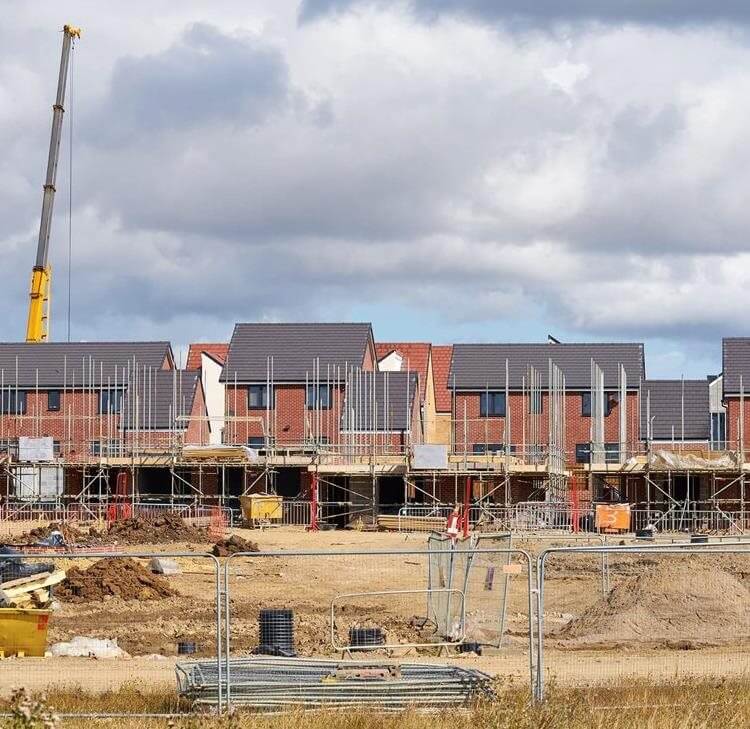New Year, New Subsidy Control Regime Part 2: Schemes, enforcement and transparency under the Subsidy Control Bill
In the first part of this article, we discussed the application of the Subsidy Control Principles. In part 2, we look at how Streamlined Subsidy Schemes will be used to grant certain subsidies more quickly, and at the enforcement and transparency provisions of the Bill.
In the first part of this article, we discussed the application of the Subsidy Control Principles (Principles), and the exemptions, prohibitions and restrictions contained within the Subsidy Control Bill. In part 2, we look at how Streamlined Subsidy Schemes will be used to grant certain subsidies more quickly, and at the enforcement and transparency provisions of the Bill.
Streamlined Subsidy Schemes/Streamlined Routes
Section 10 of the Bill provides for a power for a minister to make a ‘streamlined subsidy scheme’. The Policy Statement issued by the Government on Streamlined Routes (or Streamlined Subsidy Schemes as they are referred to in the Bill) provides that these are routes for public authorities to grant subsidies more quickly, where the subsidy is routine and low risk or aligned to UK priorities. Streamlined Routes are intended to provide a process for demonstrating compliance with the Principles that is easier than the baseline route (i.e. an analysis of the Principles). Provided the subsidy is within specific parameters, subsidies may be awarded under a Streamlined Route. These Streamlined Routes will be designed by BEIS, and some illustrative examples have been published for Heat Networks (Clean Heat) and RD&I, although the Policy Statement suggests that other ‘clean heat’ and RD&I projects may be captured by these routes in future.
Subsidies awarded under a Streamlined Route will be exempt from referral to the CMA and cannot be subject to call-in – although they are still open to challenge by way of judicial review. However, the intention is that these subsidies have been pre-assessed as being compliant with the Subsidy Control regime, and so the risk of challenge may be lower (although that will of course depend on whether the Streamlined Route is properly designed and applied).
The Streamlined Routes appear to work in a manner similar to the General Block Exemption Regulation, in that:
- they require initial information to be provided by the potential beneficiary aimed at identifying the incentive effect of the subsidy; and
- they set out certain parameters within which the subsidy may be granted – i.e. the public authority can fund only a proportion of the beneficiary’s total project costs and capital expenditure and the project must meet certain conditions.
However, the indicative heat network scheme published requires further development before it could be used effectively. For example, it requires a granting authority to assess a project on the value it provides, versus a counterfactual low-carbon heating technology, to ensure that subsidies do not limit the competitiveness of those technologies. What that actually requires in practice is not clear. In many cases it will be possible to compare the proposed project against a counterfactual with support from a grantor’s expert advisors, but how the granting authority will ensure that the subsidy does not limit the competitiveness of other technologies is not apparent.
If the Streamlined Route is delivered effectively, it would provide much needed certainty for granting authorities, enabling them to make subsidies quickly and efficiently within certain parameters. This assumes the conditions imposed are sufficiently user-friendly to enable sub-central authorities to confidently apply them. Care will be needed to ensure any conditions do not require granting authorities to undertake a disproportionate level of assessment, otherwise the streamlined subsidies may be no quicker than applying the Principles.
Transparency
Chapter 3 sets out obligations in relation to transparency. Public authorities making subsidies must make entries into the transparency database for subsidies and subsidy schemes that they grant, where the value of the subsidy or subsidy scheme is over £500,000. Most subsidies must be added to the database within six months of confirmation of the decision to give the subsidy or make the subsidy scheme. The public authority is under a duty to maintain the entry on the database for a period of six years, or the duration of the subsidy scheme if longer. Certain modifications to reported subsidies must also be entered on the database. The Bill includes a list of information which regulations made by the Secretary of State may require public authorities to enter onto the database, including the name of the beneficiary and the value of the subsidy.
Commentators have pointed out that public authorities do not appear to be recording all awards of subsidies on the transparency database, and to the extent that entries are recorded, they are often missing key information (for example, the value of the relevant subsidy) or they may be undated. This leaves potential challengers without the ability to understand when the limitation period begins or whether there is a claim to be made. In addition, this of course compounds the difficulties of having a very short limitation period (see below), as challengers are likely to be either put off entirely or required to try to seek further information within a very short period of time in able to understand their position.
It appears to us that there is also the potential that public authorities may decide that to ‘wait out’ the limitation period by publishing the details of the subsidy on the database and then waiting a month before actually granting the subsidy or scheme. This may be a useful way of flushing out a challenge in some circumstances, but if it is used as a matter of course it is unlikely to promote trust in the regime, as this could be used to ‘sidestep’ the need for clear analysis of the subsidy and where an authority can rely on the expiry of the limitation period to obtain certainty about the award.
As there is currently no penalty for failing to submit an award of a subsidy to the transparency database, there is also a risk that subsidies will not be recorded at all and are therefore, not subject to any scrutiny whatsoever. As the CMA does not appear to be able carry out an investigation on its own initiative, there is little risk of a subsidy which is not recorded on the database coming to the attention of the CMA or potential challengers unless its effects are particularly felt. Even then, without knowing who has granted the subsidy, finding enough information about the subsidy to challenge it is likely to be difficult, as the disclosure obligations in the Bill require that the requestor knows the identity of the party having made the subsidy to be able to request disclosure of information about it.
The CMA
Part 4 of the Bill relates to the CMA’s functions in relation to the subsidy control regime.
The Bill provides for a range of occasions in which a subsidy may be referred to the CMA for a report. These include voluntary referrals by the granting authority, mandatory referrals in certain situations, and the Secretary of State may also direct a public authority to request a report on a particular subsidy or require that the CMA produces a report directly.
The Policy Note on Subsidies and Schemes of Interest and Particular Interest provides that granting authorities intending to grant subsidies or schemes of interest will have the option to make a voluntary referral to the CMA for assessment of their subsidy prior to award. When a subsidy will be a subsidy of interest will be defined by regulation, but the recently published policy notes provide that subsidies over a certain value threshold, or with certain design features (not yet confirmed), or subsidies for rescuing an ailing or insolvent enterprise (or certain other subsidies of a similar nature which are subject to restrictions under the Bill) will fall into this category.
If the criteria for a subsidy to be a subsidy of interest are not clearly defined and limited, there is a risk that the CMA may become overly burdened by public authorities seeking the CMA’s views. As we have said in previous articles, legal certainty is very important to public authorities and many funding recipients, and in the absence of clear rules and guidance, there is a real risk that referrals to the CMA will become a matter of course when granting a subsidy which falls within this category. Clear guidance for application of the new regime has been promised but is still clearly a work in progress.
Some subsidies (those ‘of particular interest’) must be subject to scrutiny by the CMA before they are made. A subsidy of particular interest will be defined by regulations, but the policy note says that these will be subsidies concerning a ‘sensitive sector’ in excess of a particular value threshold, all subsidies (regardless of sector) over a certain value threshold, and all subsidies for restructuring ailing or insolvent enterprises, which are subject to additional requirements in the Bill. These subsidies are subject to mandatory referral to the CMA because they are more likely to pose a substantial risk of negative effects on domestic competition and investment or international trade.
The approach taken in the Bill and the regulations made under it may have a significant impact on the way that the subsidy regime works. If a risk-averse approach is taken, then a significant number of subsidies may require prior consideration by the CMA before they can be granted. On one hand, this may diminish the perceived flexibilities gained by allowing public bodies to take their own decision as to whether a subsidy complies with the new regime and slow down the granting of subsidies, but conversely it may offer authorities the certainty they are looking for when granting higher risk subsidies.
The content of a CMA report will depend on the circumstances in which the report was requested, and whether or not the subsidy or scheme has been granted yet. The CMA may evaluate the public authority’s assessment of the subsidy’s compliance with the Principles and prohibitions. It may also consider any effects that the subsidy or scheme may have on competition or investment within the UK. The CMA may provide advice about how the public authority could improve its assessment of the subsidy’s compliance with the Principles and prohibitions, and how a subsidy might be modified to ensure compliance with those matters.
One of the key things that needs to be clarified is what the status and effect of a report on a subsidy by CMA will be. It appears that it will have no binding effect, but will the courts view a public authority who chooses not to follow the view of the CMA negatively? This remains to be seen.
Enforcement
Enforcement of the subsidy control regime will be by way of application to the Competition Appeal Tribunal (CAT) to review a decision to give a subsidy, who may grant relief in the same way as the High Court on an application for judicial review. In many cases, the time limit for bringing judicial review proceedings will only be one month from the date that an entry is made on the subsidy database (see above in relation to the database itself).
A very short limitation period means that potential challengers need to be hyper-vigilant when it comes to checking whether subsidies have been made, and ready to take legal advice and issue proceedings within an extremely short period. Many entities which may be affected by a subsidy will not have this capacity and are, therefore, at risk of being unable to take action when they are negatively affected. Helpfully for claimants, the limitation period is effectively extended by the time taken by the authority to fully respond to a formal request for information and materially incomplete notifications on the database will not start the clock. A month to mobilise to issue a claim will still be challenging though, so extending the limitation period and ensuring that entries are recorded on the transparency database with clear information about the subsidy would help to alleviate this.
The way in which the Bill is enforced is particularly important, because it is a crucial factor in how the subsidy regime is perceived – if the enforcement regime is weak, it will not promote good decision making and consequently, trust in the regime may fail. Likewise, the negative impact of subsidies which are not granted with care as to their effects may stifle innovation and put businesses at risk. Consideration should be given to extending the limitation period for challenges made under the prospective Act, which is already significantly shorter than the usual period for other judicial review challenges. While the public procurement regime currently operates under a similar limitation period the situation there is very different – most claimants have been involved in a procurement process for some time so are already familiar with the background and context when the limitation period starts to run.
Final Comments
A recurring theme for subsidy control is balancing flexibility with certainty. Given the Government’s stated desire to maintain a level playing field and the need to comply with international subsidy commitments, subsidies must be justifiable and balanced against any negative consequences. Government will need to ensure its expectations for the level of analysis required by public authorities are proportionate and realistic, otherwise it may find many authorities relying on streamlined subsidy schemes rather than taking advantage of the flexibility offered under the new regime. The extent to which this is a problem will depend on the breadth and depth of the streamlined subsidy schemes of course.
Similarly, the entire regime has the potential to be undermined if the challenge and enforcement mechanisms are not effective – starting with the transparency database. While public authorities need to have certainty that subsidies will not be open to challenge indefinitely, potential claimants need sufficient time to effectively assess whether a breach has occurred and whether a claim is worth pursuing.
The Bill is undoubtedly an improvement on the current interim regime as it provides a great deal more clarity. However, there are still areas of uncertainty – particularly as to how the regime will be applied in practice - which can only be addressed by detailed guidance and the content of the streamlined subsidy schemes. While the early publication of draft indicative guidance and regulations is welcomed, there is still a lot of work to be done in ensuring that these provide the clarity and certainty needed for public authorities to confidently provide subsidies in accordance with the new regime.
Contact

Angelica Hymers
Principal Associate
angelica.hymers@brownejacobson.com
+44 (0)115 976 6092








































